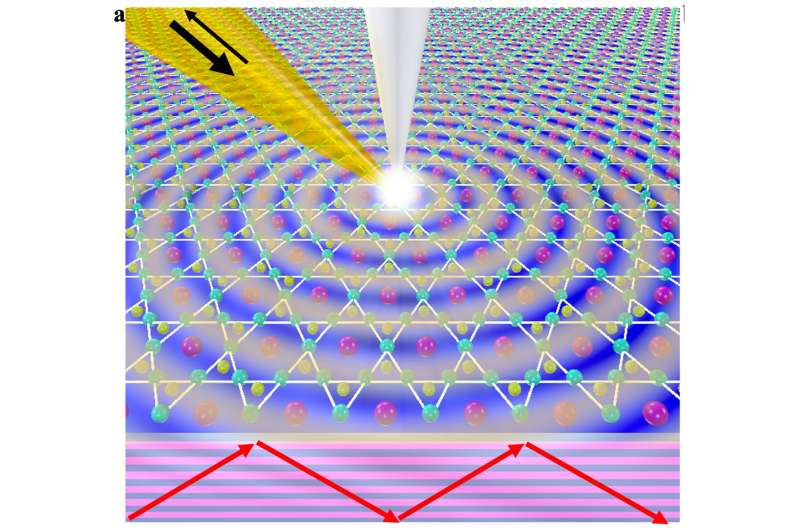A fascinating illustration of the Kagome metal cesium vanadium antimonide showcases the mesmerizing movement of plasmon waves within the material. Credited to Guangxin Ni
Originating from traditional Japanese basket-weaving, the intricate “Kagome” design, characterized by interlaced triangles with shared corners, has inspired a class of materials in quantum physics. These materials exhibit an atomic structure resembling the unique lattice pattern of the Kagome design.
Since the discovery of the latest Kagome metal family in 2019, physicists have delved into unraveling their properties and potential applications. A recent study spearheaded by Assistant Professor of Physics Guangxin Ni from Florida State University sheds light on how a specific Kagome metal interacts with light to produce plasmon polaritons—interconnected waves of electrons and electromagnetic fields at the nanoscale, induced by light or electromagnetic waves. The findings were published in Nature Communications.
While previous studies have explored plasmons in conventional metals, the behavior of electrons in Kagome metals presents a more intricate scenario. In this research, the FSU team investigated the properties of the metal cesium vanadium antimonide, known as CsV3Sb5, to unveil why it stands out as a promising candidate for advanced photonic technologies.
The researchers made a groundbreaking discovery by identifying plasmons in CsV3Sb5 for the first time and observed that the wavelength of these plasmons varies with the metal’s thickness.
Furthermore, altering the laser frequency directed at the metal led to a transformation in the behavior of plasmons, transitioning them into “hyperbolic bulk plasmons” that propagate through the material instead of remaining confined to the surface. Consequently, these waves exhibited reduced energy loss, enhancing their travel efficiency.
“Hyperbolic plasmon polaritons are a rarity in natural metals, but our study demonstrates how electron interactions can give rise to these exceptional waves at the nanoscale,” Ni remarked. “This breakthrough holds significant implications for the advancement of nano-optics and nano-photonics technologies.”
2024-07-30 13:15:03
Article from phys.org
